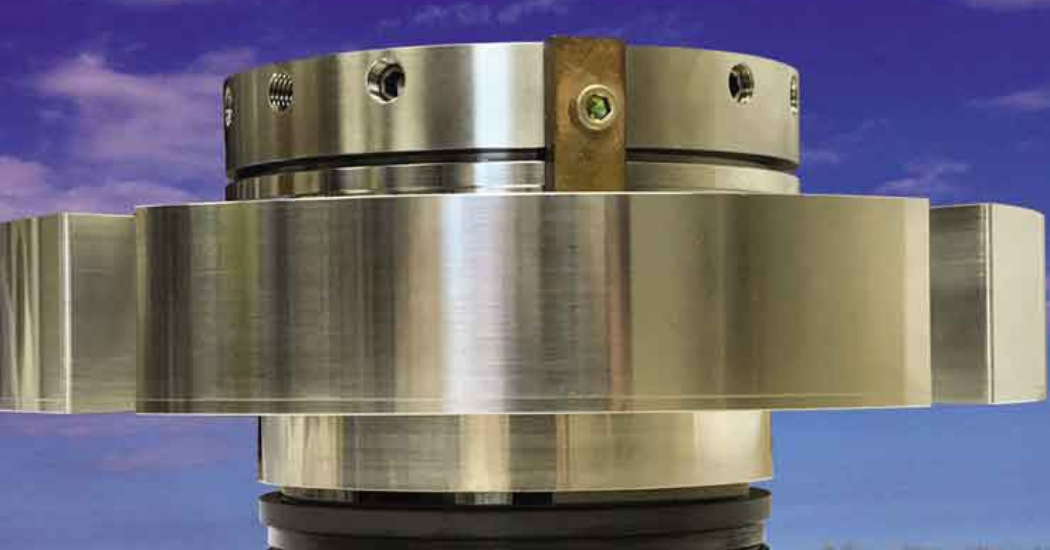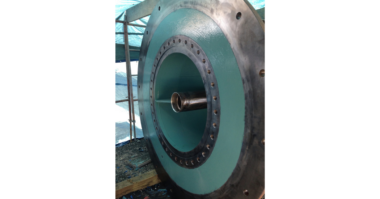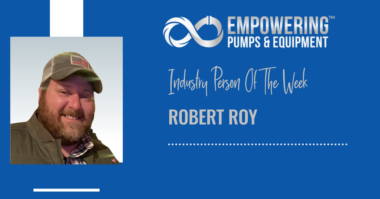Double or dual mechanical seals are designed for maximum sealing safety. These seals essentially eliminate leakage of the fluid or gas being handled in mixers or pumps.
- Double seals provide a level of safety/zero emissions compliance not achievable with single seals. This is essential when pumping or mixing a dangerous or toxic substance.
- Double seals are a must-have for certain applications in many countries
- These seals are increasingly used by companies to meet specific environmental goals or emissions requirements.
- A properly installed double seal also allows for near-complete control over the seal operating environment and fluid film over the seal faces. This factor alone can greatly maximize seal life.
How It Works
A double mechanical seal has two primary seals with a barrier or buffer fluid area in between. Each primary seal typically consists of a softer, narrower stationary face accompanied by a harder, wider rotating face. This arrangement enables the softer seal to wear while maintaining the integrity of the harder faced seal during service.
When to Use Double Seals
Pump and seal manufacturers recommend double seals for a variety of reasons:
- Prevent a hazardous product from reaching the atmosphere/polluting the environment
- Avoid leakage of an expensive process fluid product
- Maximize seal life by controlling the type of fluid film on the seal faces
- Isolate the mechanical seal from atmospheric conditions
- Provide an alternative when the process fluid will not provide stable and reliable lubrication of the seal faces (such as gaseous media, viscous fluids, non-settling slurries, or fluids liable to harden)
- Establish a backup seal in the event of an inboard seal failure or planned equipment repair (or to identify seal failure during operation)
- Avoid contamination of the process media should one seal fail
Full Control Over the Seal Environment
To extend the life of any seal, you want to control the fluid film that comes into contact with the seal face. This establishes the ideal lubrication, temperature, and pressure. A dual seal allows you to control of all these factors.
Double seals require fluid exchange between the inboard and outboard seal faces. Each double seal must be installed with an environmental control/support system that introduces a barrier or buffer fluid in between the primary seals. This fluid is typically delivered from a tank to cool and lubricate the seal faces using a piping plan. The use of level and pressure meters on support tanks are crucial for both containment and safety.
Depending on the pressure and seal arrangement, such a system can be used to:
- Control the operating temperature (up/down) of the seal
- Provide lubrication and/or clean fluid to the seal faces (other than the process fluid)
- Isolate the seal from the atmospheric conditions
- Control the pressure drop occurring across the seal faces
The fluid can also be used to remove process and frictional heat. It can combats issues with cavitation and dry running. The correct fluid set-up can also effectively direct the hydraulic load to the inboard or outboard seal to meet operational needs and to increase the life of the seal.
Barrier vs Buffer Fluids
There are two modes of operation to choose from:
- Barrier Fluid: Fluid pressure is 15-30 Psig/1-2 Bar higher than the pumped fluid pressure
- Used when the process fluid is highly dangerous and a failure of one primary seal could put employees or the environment in danger
- Displaces the sealed fluid across the inboard seal and lubricates the seal faces
- Buffer Fluid: Fluid pressure is lower than sealed pressure: Used if contamination of the process fluid is unacceptable and if the sealed fluid provides adequate primary seal lubrication.
Use a Barrier Fluid to:
- Keep process fluid from crossing the seal faces (especially in slurry operations)
- Prevent process fluid that is sticky or has a tendency to settle from generating high face torques during startup
- Prevent the process fluid from vaporizing across the seal faces
- Prevent process fluid from causing damage to the inboard mechanical seal faces
- Lubricate inboard and outboard seal
Turn to a Buffer Fluid to:
- Prevent leakage into the atmosphere or environment
- Prevent the process fluid from becoming contaminated
- Reduce the operating stress of the inboard seal
- Identify possible seal failure while operating
- Lubricate the inboard face of the seal (while process fluid will lubricate outboard seal faces)
Fluid Options
A variety of possibilities exist for the Barrier or Buffer Fluid, but the key factor is compatibility with the sealed media. Liquids used fall into several categories:
- Water and water glycol solutions
- Mineral-based hydraulic and lubricating oils
- Synthetic-based hydraulic and lubricating oils
- Heat transfer fluids
- A dilution of the process fluid, or the process fluid itself
Dual Seal Configurations
Double mechanical seals come in rotary and stationary versions. There are three typical configurations:
- Back-to-Back: Typically used for general applications
- Tandem (sometimes referred to as ‘Face-to-Back): Provides absolute backup should one seal fail
- Face-to-Face: Stationary – Becoming less popular
There are no hard-and-fast rules for the right configuration. This is where your operation’s reliability/environmental goals come into play and where the experience of a seal manufacturer’s specialist can be invaluable.
The bottomline is that the double seal option is unmatched in terms of safety, leak/emission-free operation, and Life-Cycle Cost (LLC). Learn more about double seal set-up and operation in our upcoming posts.





Comments